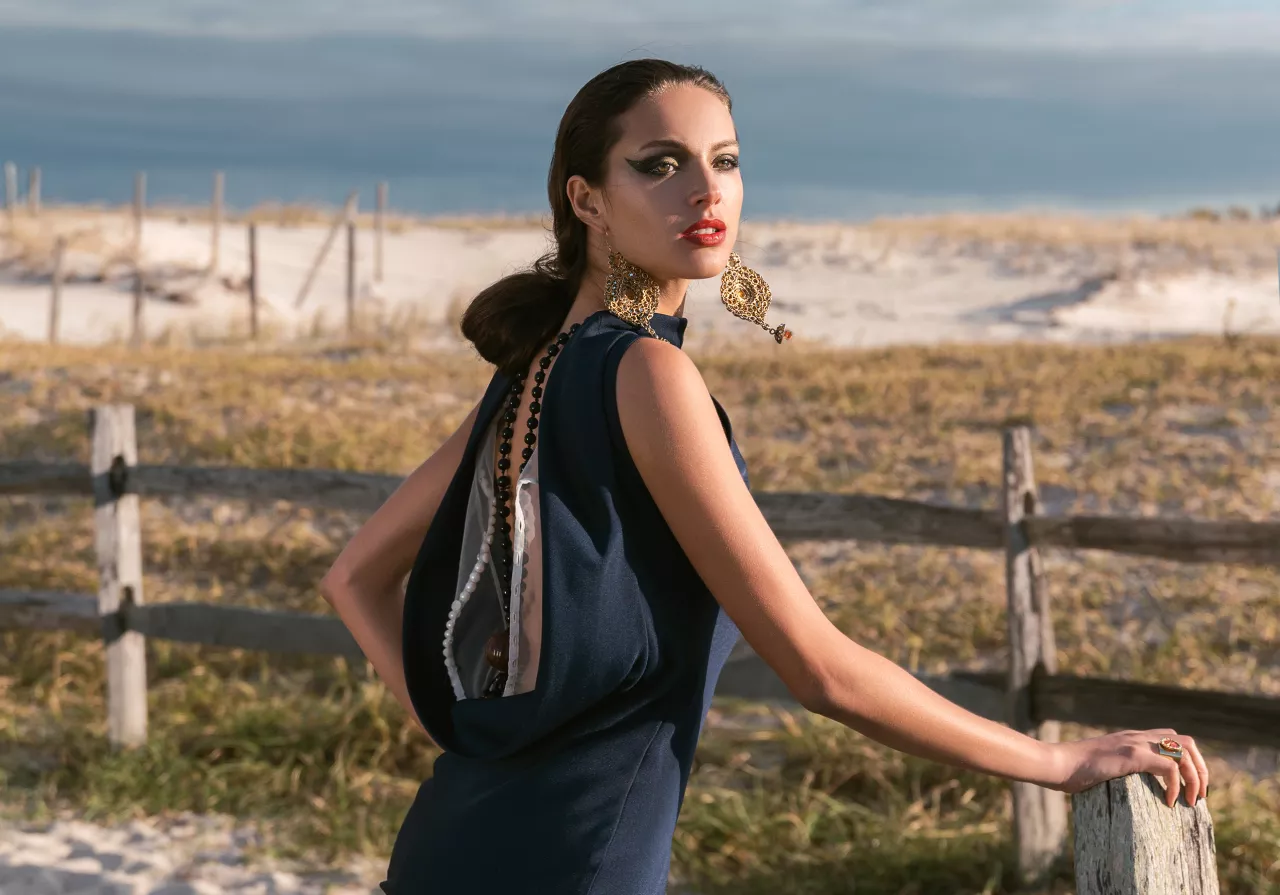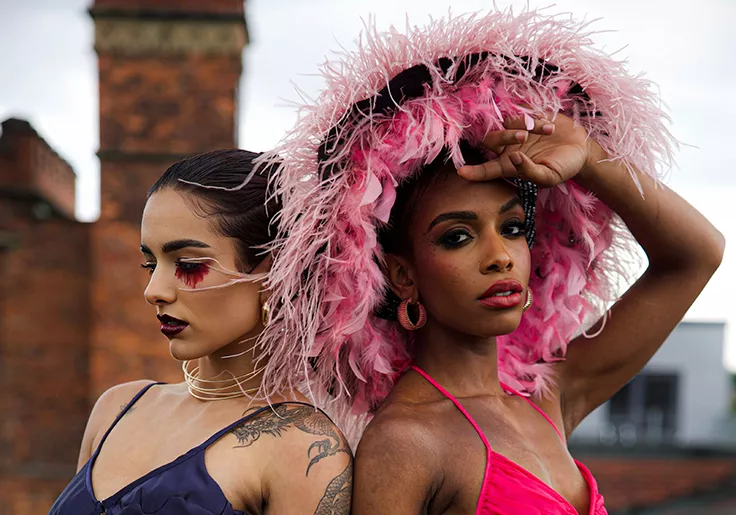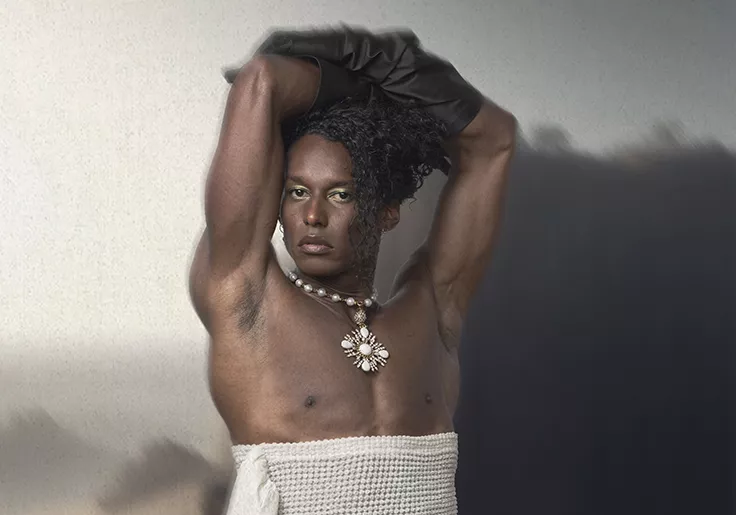12/23
MAGIC FEIFEI:
How long have you been a photographer? What pushed you on this path in the beginning?
I've been a photographer for 5 years. I knew I wanted to study photography since high school, and I pursued it for four years in college. My passion and serious commitment to this medium keep me going. I persist because ideas and creativity continually emerge in my mind, urging me to bring them to life.
Have you always wanted to make art?
Not always, even though my main practice is always art, I still think that life and other things around me is also important for me because I need break from art to think about art, art is associated with a lot of other stuffs, I can’t have a single inspiration without doing or thinking others than just artwork.
Tell us about your favorite shoot.
Every photo session I undertake is intense, immersive, rhythmic, and demanding. Each time, I'm sweating, fully focused, and in a state of urgency. If a shoot doesn't evoke this reaction, I likely wouldn't care for it much.
What inspires you?
My inspiration comes from life experiences – everything happening around me. I draw inspiration from other photographers like Jo Ann Callis, Martin Parr, Doug Dubois, Qingsong Wang, Pixy Liao, Laurie Simmons, Shoji Ueda, Li Yu & Liu Bo, and many others. Recently I was looking at Robert Lober, Erwin Wurm, Song Dong, Pope L. News, stand ups, conversations with friends and loved ones, and the challenges in my own life all serve as sources of inspiration.
How would you characterize your style?
In fashion photography, my style often involves staging, with a preference for crowded, symmetrical, complex, and chaotic scenes. I enjoy capturing multiple people and photos with a narrative. Before we start taking photos, we extensively research and organize relevant information, discussing the desired effects. I use brief sketches to depict the scenes I envision, orchestrating all pertinent details into one composition. My photos are typically pictorial.
What advice would you give to a beginning photographer?
As a young artist deeply engaged in photographic exploration, I currently serve as a teaching assistant for university photography courses. My advice to students is to keep asking questions about their work, to listen and learn more than they speak. Attend exhibitions, read books, and approach art with sincerity. It is ok not to know what you are doing with your art, patience is most important. There will be a lot of voices around you throughout your art practice, be decisive on what you believe.
TONG TONG:
Please tell us about the concept of this collection. When did you first have ideas for it?What inspired you?
During the COVID-19 pandemic, a particular childhood memory frequently resurfaced. As a child, I used to sneak into my parents' wardrobe and dress up in their daily office outfits while they were away. It was a magical moment for me, creating various characters in front of the mirror. This nostalgic experience inspired me to develop a collection aimed at recapturing that whimsical feeling. Drawing from images of my own childhood and the office attire of men and women from that era, I crafted a collection of garments that embodies the same sense of playfulness.
How did you and Magic Feifei work together to create these images?
I met Feifei when I was about to finish these garments. Discovering that her work also explored similar themes, we decided to collaborate. Our goal was to create theatrical and narrative imagery, which aligned with her expertise. We sat down multiple times, sketching and planning the scenes we envisioned, and specific images began to take shape. Throughout the process, we aimed to maintain a sense of playfulness. The shoot felt akin to making a movie, with careful attention to detail and a collaborative creative effort.
What inspires you? How would you characterize your creative process?
My inspirations draw from various aspects of my life, often encompassing movies, photography, and music, as these mediums evoke vivid imaginations and emotions for me. Additionally, histories and memories, especially those related to vintage clothing and antique objects, never cease to fascinate me. Despite the diversity of my inspirations, a common thread runs through them all—they all revolve around themes that evoke nostalgic feelings.
When I conceive an idea, whether it's a vivid image or an abstract feeling, I almost always develop a narrative or create an environment for my collection. I find that narrative is crucial to my creative process. Once the concept takes shape, I source fabrics that seamlessly fit into that narrative. Furthermore, I enjoy experimenting with visual elements from my research, incorporating them into my collections through prints, embroidery, or unique silhouettes. Across different collections, my consistent aim is to infuse playfulness and simplicity into my designs.
Have you always wanted to make art?
No, I didn't really know what I wanted to do until high school. My interest in art was sparked by an art history class during that time, and a question arose: 'Can I also try to make art?' This led me to start learning drawing, and ultimately, I decided to pursue art further by attending an art school for my college education.
How long have you been a fashion designer? What pushed you on this path in the beginning?
I have been working as a fashion designer for almost five years now. During my second year in college, I enrolled in an introductory fashion class out of curiosity, and it completely shifted my perception. I discovered the profound connection between the human body and society through the lens of fashion. The rich cultural meaning and craftsmanship inherent in this medium deeply resonated with me. This realization has fueled my continuous quest for knowledge in fashion, driving me to constantly learn and enrich my design language. My goal is to create something truly beautiful by weaving together elements of cultural significance and impeccable craftsmanship.
What advice would you give to a beginning fashion designer?
For someone who's just getting started, I believe it's crucial to be comfortable with the idea that things won't always go as planned and to maintain curiosity and enthusiasm. Experiment creatively without overwhelming yourself, and your unique voice will naturally develop over time. Additionally, acquiring a strong understanding of various garment-making techniques is important, as it will establish a solid foundation for your own designs and boost your confidence in the creative process.










